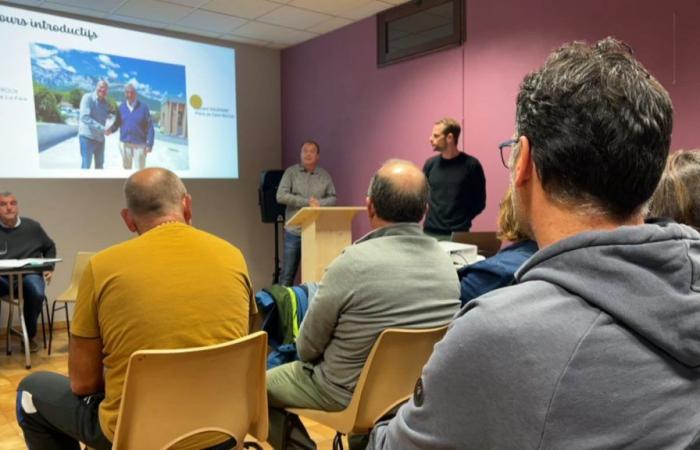The merger of La Fare and Saint-Bonnet, under discussion since April 2024, is causing concern. The project, supported by the two communes of Champsaur, was defended this Monday, October 7 during an information meeting which did not convince the audience. The tone has risen, despite the arguments of the two municipalities.
“We have nothing in common with Saint-Bonnet, we have the Drac which separates us”. The muscular intervention of this resident of La Fare sums up the majority feeling of the inhabitants of this small village of Champsaur: the fear of seeing themselves swallowed up by the neighboring town of Saint-Bonnet, from which only a bridge separates them.
“I would like to know why we need to be absorbed, since that is the term,” adds a second.
The evening organized on Monday October 7 aimed to inform and allay citizens’ concerns regarding the proposed merger of the two municipalities. It didn’t happen. At the end of the meeting, faces are tense. Invectives, whistles and boos accompanied the speeches of the municipal teams.
Despite all his efforts, the moderator and Small Town of Tomorrow project manager, Nicolas Pascal, had to shorten the session. “Those which have already been merged with Saint-Bonnet, the small hamlets, remain aside,” says Rémi, a resident of La Fare.
“The residents realized that there were a certain number of questions left unanswered and I am not sure that they will have found their answers,” analyzes Yves, also a resident of the village.
A transfer of skills to intercommunity at the heart of the problem
Because the format of the meeting, a long presentation followed by a question-and-answer game, tensed an audience who expected an open debate. Above all, the timing of the merger is questionable and has been seen as a lack of transparency.
Tensions are also focused on the increase in property taxes, although the Fare municipal team assures that the increase would be smoothed over 12 years, which would correspond to an increase of 4 to 8 euros per year.
At the podium, the mayor of La Fare, Jérôme Roux, ensures that the project would increase the budget of the new municipality and its attractiveness. The elected official is concerned about the transfer of certain skills to the intercommunity by 2026 and therefore a drop in income. “We are going to lose economic competence, we are going to lose water competence… All this will perhaps pass to the intercommunal level,” worries Jérôme Roux.
For his part, the mayor of Saint-Bonnet Laurent Daumark believes that the merger is crucial for the future of the two municipalities: “All subsidies go through the Communities of Municipalities and if we are not a little strong at the center of the Community of municipalities, our projects will not be a priority.”
According to municipal teams, the merger would enable necessary investments in terms of housing, health, tourism and urban development. The tone is intended to be reassuring: local services would be maintained and the number of elected officials would remain equivalent.
A vote to dissipate tensions
Nothing helps. Exasperation even pushed some citizens to create a collective to protest against the merger, which led to the organization of a public consultation scheduled for November 24. A vote in the municipal council must then take place but time is running out: if the merger is maintained, it must legally take place before January 1, 2025.
Until then, the two municipalities will continue to try to convince their residents. The dialogue has not yet broken off: a second information meeting is planned for this Thursday, October 10 at 8 p.m. in the Saint-Bonnet town hall.






